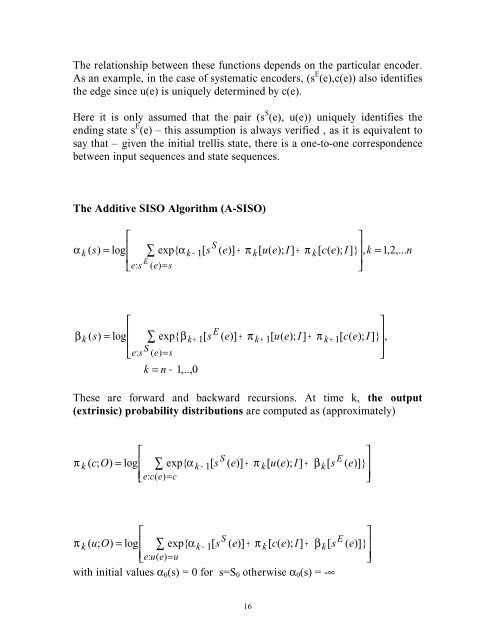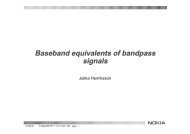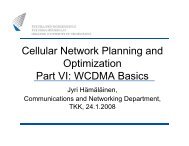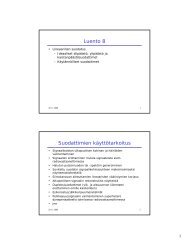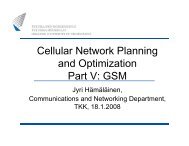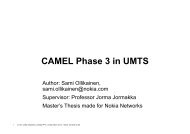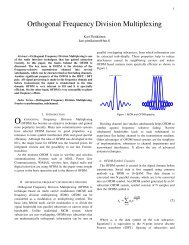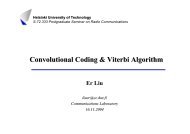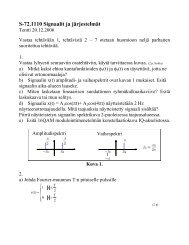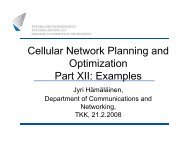Lecture notes on turbo codes.
Lecture notes on turbo codes.
Lecture notes on turbo codes.
You also want an ePaper? Increase the reach of your titles
YUMPU automatically turns print PDFs into web optimized ePapers that Google loves.
The relati<strong>on</strong>ship between these functi<strong>on</strong>s depends <strong>on</strong> the particular encoder.As an example, in the case of systematic encoders, (s E (e),c(e)) also identifiesthe edge since u(e) is uniquely determined by c(e).Here it is <strong>on</strong>ly assumed that the pair (s S (e), u(e)) uniquely identifies theending state s E (e) – this assumpti<strong>on</strong> is always verified , as it is equivalent tosay that – given the initial trellis state, there is a <strong>on</strong>e-to-<strong>on</strong>e corresp<strong>on</strong>dencebetween input sequences and state sequences.The Additive SISO Algorithm (A-SISO)αk⎡( s)= log⎢∑exp{α⎢ E⎣e: s ( e)= s⎤[ c(e);I]}⎥,k⎥⎦Sk −1 [ s ( e)]+ πk[ u(e);I]+ πk=1,2,... nβk⎡( s)= log⎢exp{⎢∑ βk+⎣e: sS( e)= sk = n −1,..,01[ sE( e)]+πk + 1[ u(e);I]+πk + 1⎤[ c(e);I]}⎥,⎥⎦These are forward and backward recursi<strong>on</strong>s. At time k, the output(extrinsic) probability distributi<strong>on</strong>s are computed as (approximately)πk⎡⎤⎢SE( c;O)= log ∑exp{αk−1 [ s ( e)]+ πk[ u(e);I]+ βk[s ( e)]}⎥⎢⎣e:c(e)= c⎥⎦⎡⎤⎢SEπk( u;O)= log ∑exp{αk−1 [ s ( e)]+ πk[ c(e);I]+ βk[s ( e)]}⎥⎢⎣e:u(e)= u⎥⎦with initial values α 0 (s) = 0 for s=S 0 otherwise α 0 (s) = -∞16


